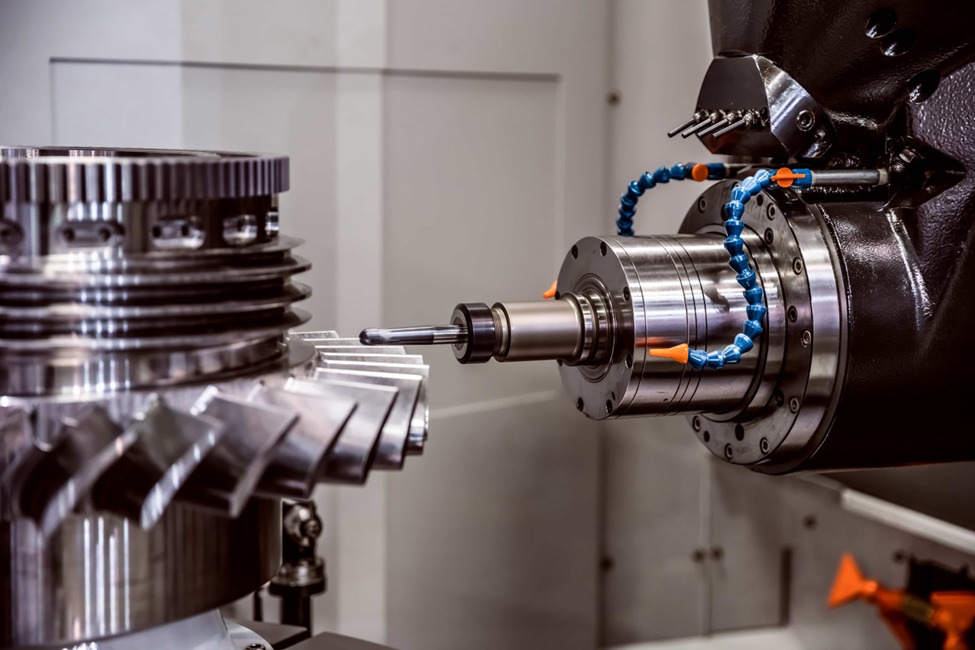Diving Deep into CNC Milling: Processes, Tools, and Considerations

CNC (Computer Numerical Control) milling is a sophisticated manufacturing process that has revolutionized the way parts and components are fabricated across various industries. Let's delve into the intricacies of CNC milling, exploring its processes, tools, considerations, and applications.
Introduction to CNC Milling
CNC milling involves the use of computerized controls to automate the machining process. It allows for precise cutting and shaping of materials such as metals, plastics, and composites. This technology plays a pivotal role in modern manufacturing, offering unparalleled accuracy and efficiency.
Understanding the CNC Milling Process
CAD Design
The process begins with Computer-Aided Design (CAD), where engineers create digital models of the desired parts.
CAM Programming
Subsequently, Computer-Aided Manufacturing (CAM) software translates these designs into machine-readable instructions, generating toolpaths and machining strategies.
Material Selection
Choosing the right material is crucial for achieving the desired mechanical properties and surface finishes.
Machine Setup
Operators mount the workpiece onto the CNC milling machine and install appropriate cutting tools.
Cutting Operation
The machine precisely removes material from the workpiece according to the programmed instructions, resulting in the final part.
Types of CNC Milling Tools
End Mills
These versatile tools feature cutting edges on the bottom and periphery, ideal for contouring and slotting.
Face Mills
Designed for facing and shoulder milling, face mills have large cutting diameters and multiple inserts for high material removal rates.
Ball Nose Cutters
Utilized for 3D contouring and sculpting, ball nose cutters create smooth curves and intricate shapes.
Slot Drills
Primarily used for machining slots and keyways, slot drills have two flutes for efficient chip evacuation.
Reamers
After rough milling, reamers are employed to achieve precise hole dimensions and surface finishes.
Factors to Consider in CNC Milling
Material Type and Properties
Different materials exhibit varying machinability, hardness, and thermal conductivity, necessitating tailored machining parameters.
Cutting Speeds and Feeds
Optimizing cutting speeds and feeds enhances productivity while minimizing tool wear and material deformation.
Tool Selection
Selecting the appropriate tool geometry, coating, and substrate ensures optimal performance and longevity.
Workpiece Fixturing
Securing the workpiece firmly in place prevents vibrations and inaccuracies during machining.
Surface Finish Requirements
Consideration of surface finish requirements dictates the choice of machining strategies and cutting tools.
Advanced Techniques in CNC Milling
High-Speed Machining
Utilizing accelerated spindle speeds and feed rates, high-speed machining reduces cycle times and improves surface finish.
Multi-Axis Machining
By simultaneously moving the cutting tool along multiple axes, multi-axis machining enables complex geometries to be machined efficiently.
Trochoidal Milling
Trochoidal milling involves circular toolpaths, reducing tool wear, and improving chip evacuation in deep cavities.
Adaptive Machining
Adaptive machining dynamically adjusts cutting parameters based on real-time feedback, optimizing tool life and material removal rates.
Applications of CNC Milling
Aerospace Industry
CNC milling is extensively employed in aerospace manufacturing for producing aircraft components with tight tolerances and complex geometries.
Automotive Sector
In the automotive sector, CNC milling is utilized for fabricating engine components, chassis parts, and prototypes.
Medical Device Manufacturing
Medical device manufacturers rely on CNC milling for crafting precision instruments and implants with biocompatible materials.
Prototyping
CNC milling facilitates rapid prototyping, allowing designers to iterate quickly and validate their concepts before mass production.
Challenges and Solutions in CNC Milling
Tool Wear and Breakage
To mitigate tool wear and breakage, operators must monitor cutting conditions and employ proper tool maintenance practices.
Chip Evacuation
Efficient chip evacuation is essential for preventing chip recutting and workpiece damage, requiring optimized coolant delivery and chip evacuation systems.
Programming Complexity
Addressing programming complexity entails leveraging advanced CAM software and implementing standardized machining practices.
Maintaining Accuracy
Regular calibration and preventive maintenance of CNC milling machines are necessary for preserving dimensional accuracy and surface finish.
Future Trends in CNC Milling
Additive Manufacturing Integration
The integration of additive manufacturing technologies with CNC milling enables the fabrication of hybrid parts with enhanced functionality and complexity.
AI and Machine Learning
Advancements in AI and machine learning algorithms facilitate predictive maintenance, adaptive machining strategies, and intelligent toolpath optimization.
Nanotechnology Applications
CNC milling, combined with nanotechnology, enables the precise machining of miniature components for electronics, optics, and medical devices.
Conclusion
CNC milling stands at the forefront of modern manufacturing, offering unparalleled precision, efficiency, and versatility. By understanding its processes, tools, and considerations, manufacturers can harness the full potential of this technology to drive innovation and competitiveness in their respective industries.
FAQs
What are the advantages of CNC milling over traditional machining methods?
- CNC milling offers higher precision, repeatability, and automation compared to traditional machining methods, resulting in increased productivity and cost-effectiveness.
How does CNC milling contribute to manufacturing efficiency?
- CNC milling streamlines the production process by automating repetitive tasks, reducing setup times, and minimizing material waste, thereby enhancing overall efficiency.
What safety precautions should be observed when operating CNC milling machines?
- Operators should wear appropriate personal protective equipment (PPE), adhere to machine safety protocols, and undergo training on safe operating procedures to prevent accidents and injuries.
Can CNC milling be used for producing complex geometries?
- Yes, CNC milling excels at machining complex geometries with tight tolerances, intricate features, and fine surface finishes, making it suitable for a wide range of applications across various industries.
What are the primary differences between CNC milling and CNC turning?
- While CNC milling involves rotating cutting tools to remove material from a stationary workpiece, CNC turning turns the workpiece against stationary cutting tools to achieve cylindrical shapes and profiles.

No comments yet